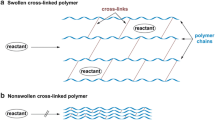Abstract
Glycine cleavage complex H protein (GcvH) is one of the four components that form the glycine cleavage complex (GCS), essential for the synthesis of C1 (one-carbon units) for cell metabolism, by the oxidative cleavage of glycine. The activity of this complex is induced in the presence of exogenous glycine, and is repressed by purines. GCS, in cooperation with GCA (serine hydroxymethyltransferase) regulates the endogenous levels of glycine and C1 units in the cell. GcvH, the lipoamide containing component of the complex, plays an indispensable role in this reaction, as its prosthetic group shuttles between the active site of the three other components of the GCS complex sequentially. In environments rich in exogenous lipoic acid, GcvH is converted to lipoyl-GcvH by Lipoate protein ligase (LplA), by the salvage pathway. When exogenous lipoic acid is deficient, it is post-translationally modified to lipoyl-GcvH by the consecutive action of two enzymes, (a) Lipoate protein ligase B (LipB) and (b) Lipoyl synthase (LipA). Although, the crystal structure has been determined for Escherichia coli GcvH, no information exists for its interaction with LipB or LipA. Therefore, we plan to study its interactions with the aforementioned enzymes. As a first step, we have carried out the complete backbone chemical shift assignments of the E. coli glycine cleavage complex H protein in its apo-form, as well as its C8- intermediate.


Similar content being viewed by others
References
Cao X, Cronan JE (2015) The Streptomyces coelicolor lipoate-protein ligase is a circularly permuted version of the Escherichia coli enzyme composed of discrete interacting domains. J Biol Chem 290(11):7280–7290
Cronan JE (2014) Biotin and lipoic acid: synthesis, attachment, and regulation. EcoSal Plus 6(1):1–39
Cronan JE (2016) Assembly of lipoic acid on its cognate enzymes: an extraordinary and essential biosynthetic pathway. Microbiol Mol Biol Rev 80(2):429–450
Cronan JE, Zhao X et al (2005) Function, attachment and synthesis of lipoic acid in Escherichia coli. Adv Microb Physiol 50:103–146
Delaglio F, Grzesiek S et al (1995) NMRPipe: a multidimensional spectral processing system based on UNIX pipes. J Biomol NMR 6(3):277–293
Jordan SW, Cronan JE (2003) The Escherichia coli lipB gene encodes lipoyl (octanoyl)-acyl carrier protein:protein transferase. J Bacteriol 185(5):1582–1589
Keller RLJ (2004) Optimizing the process of nuclear magnetic resonance spectrum analysis and computer aided resonance assignment. Dissertation. Swiss Federal Institute of Technology, Zurich
Macherel D, Bourguignon J et al (1996) Expression, lipoylation and structure determination of recombinant pea H-protein in Escherichia coli. Eur J Biochem 236:27–33
Morris TW, Reed KE et al (1994) Identification of the gene encoding lipoate-protein ligase A of Escherichia coli. Molecular cloning and characterization of the lplA gene and gene product. J Biol Chem 269(23):16091–16100
Morris TW, Reed KE et al (1995) Lipoic acid metabolism in Escherichia coli: the lplA and lipB genes define redundant pathways for ligation of lipoyl groups to apoprotein. J Bacteriol 177(1):1–10
Nesbitt NM, Baleanu-Gogonea C et al (2005) Expression, purification, and physical characterization of Escherichia coli lipoyl(octanoyl) transferase. Protein Exp Purif 39(2):269–282
Okamura-Ikeda K, Ohmura Y et al (1993) Cloning and nucleotide sequence of the gcv operon encoding the Escherichia coli glycine-cleavage system. Eur J Biochem 216(2):539–548
Wilson RL, Steiert PS et al (1993) Positive regulation of the Escherichia coli glycine cleavage enzyme system. J Bacteriol 175(3):902–904
Zhao X, Miller JR et al (2005) The reaction of LipB, the octanoyl-[acyl carrier protein]:protein N-octanoyltransferase of lipoic acid synthesis, proceeds through an acyl-enzyme intermediate. Biochemistry 44(50):16737–16746
Acknowledgements
We thank the Department of Biotechnology (DBT), Govt. of India for financial and infrastructure support. Fellowship to Usha Yadav from University Grants commission (UGC), India is also thankfully acknowledged.
Author information
Authors and Affiliations
Corresponding author
Rights and permissions
About this article
Cite this article
Yadav, U., Sundd, M. Backbone chemical shift assignments of the glycine cleavage complex H protein of Escherichia coli. Biomol NMR Assign 12, 163–165 (2018). https://doi.org/10.1007/s12104-018-9801-z
Received:
Accepted:
Published:
Issue Date:
DOI: https://doi.org/10.1007/s12104-018-9801-z




